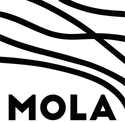Liverpool Street Worksite, Liverpool Street (Crossrail XSM10)
Museum of London Archaeology, 2019. https://doi.org/10.5284/1055107. How to cite using this DOI
Data copyright © Museum of London Archaeology, Crossrail Ltd unless otherwise stated
This work is licensed under a Creative Commons Attribution 4.0 International License.
Primary contact
Karen
Thomas
Head of Archive
Museum of London Archaeology
Resource identifiers
- ADS Collection: 3331
- DOI:https://doi.org/10.5284/1055107
- How to cite using this DOI
Introduction

This archive presents the results of an archaeological investigation by MOLA (Museum of London Archaeology) at the site of the Crossrail Central Broadgate Ticket Hall, Liverpool Street, London EC2M, City of London (Museum of London (MoL) sitecode XSM10). The fieldwork comprised a series of watching briefs (targeted and general), evaluations and excavations, conducted between 20/02/11 and 09/10/15. These were undertaken in response to the redevelopment of the site as part of the Crossrail station at Liverpool Street: excavation of the site area to a depth of 25 metres below street level was necessary to provide below-ground concourses and booking halls and escalator access to the platforms. Documents in this archive also incorporate the results of archaeological investigation by the Museum of London Archaeology (MOLA) at the Crossrail 11–12 Blomfield Street site, EC2, in the City of London (sitecodes XSL10/XTB12). These investigations comprised a series of watching briefs (Targeted and General), evaluations and excavations conducted between 24/05/2011 and 23/01/2014.
The site lay 120m north of the Roman town boundary in a landscape dominated by a tributary of the Walbrook stream, which ran along the west edge of the site. The earliest Roman activity focused on draining the site sufficiently to allow burial and road building in the area. Extensive remains of an early 2nd- to 3rd-century AD west–east metalled road were traced across the site, along with several phases of roadside ditches. The road ran west from the main Roman road to the north (later Ermine Street) and may have led to the fort in the north-west corner of Londinium (built in stone after c AD 120). To the south of the road, seven 2nd-century AD inhumation burials, including three decapitations, and one cremation burial formed part of a burial ground in this waterlogged area. Following on earlier such finds, the large assemblage of accompanying disarticulated human bone remains one of the most intriguing aspects of the Walbrook valley. The recovery of horse remains, hipposandals and archaeological evidence for pasture nearby suggests that the general area may have been used for horse pasture and/or stabling during the Roman period.
The post-Roman to medieval sequence is largely characterised by a series of marsh deposits, during which time the sites appear to have been unused. Reclamation of the marsh occurred during the 12th–early 15th centuries, a period characterised by a canalisation of the Walbrook channel and a series of large boundary/drainage ditches. Archaeological and documentary evidence shows that the XSM10 and LSS85 sites were used as gardens in the early post-medieval period.
The burial ground documented as the 'New Churchyard', (also known as variously as the Old Bedlam or Bethlem burial/burying ground/place) was in use 1569–1739. The archaeological investigations at XSM10 and LSS85 involved the excavation of c 3750 skeletons, as well as boundary walls and burial structures associated with the burial ground. The sites became increasingly developed from the mid-18th century following the closure of the burial ground. In the 1770s, the lands of the burial ground were converted into gardens or yards for the use of Broad Street Buildings (built in 1737) and No.1 Brokers Row. Greater changes occurred in the 19th century, including the construction of a new road called 'Liverpool Street' in 1823–24, then the near complete redevelopment of the sites in the 1860s and 70s, which followed the construction of Broad Street Station and Liverpool Street Stations.





